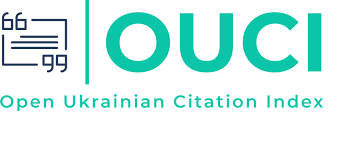ПЕРЕКЛАД ЛАКУН У СУБТИТРАХ З НІМЕЦЬКОЇ НА УКРАЇНСЬКУ МОВУ
DOI:
https://doi.org/10.31861/gph2022.841.51-56Ключові слова:
аудіовізуальний переклад, субтитрування, лакунарність, німецько-українська мовна пара, трансформаціїАнотація
У статті йдеться про поняття «лакунарності», зокрема проводиться аналіз перекладу лакун, або ж так званих «білих плям» перекладу, з німецької мови українською у субтитрах телевізійних випусків новин німецького телеканалу ZDF. Лакуни – це лексичні одиниці, для перекладу яких немає прямого відповідника, що зумовлено різними мовними картинами світу. Їх ще називають безеквівалентною лексикою. Е. Косеріу вважає, що переклад лакун – це, перш за все, переклад комунікативної ситуації, яку перекладач спершу повинен зрозуміти, а тоді якісно відтворити у перекладі. Відповідно, найпоширенішою стратегією відтворення лакун є, на його думку, описовий переклад. Сучасне перекладознавство спрямоване на розв’язання цієї проблеми, яка охоплює різні сфери життя людини. Зокрема, у цій статті розглядаються лакуни, які зустрічаються у публіцистиці. Передусім досліджується актуальна тема пандемії коронавірусу, економіки та політики. Актуальність даного дослідження полягає в недостатньому вивченні питання лакунарності в мовній парі німецька-українська, а саме переклад лакун у субтитрах. Аудіовізуальний переклад, субтитрування має певні технічні й контекстуальні особливості, які також треба враховувати.
Дослідження показало, що для перекладу лакун застосовується описовий переклад, методи транскодування (транскрипція та транслітерація) з та без пояснення, повне та часткове калькування. Задля створення адекватного та зрозумілого для реципієнта перекладу лакун від перекладача вимагається не лише високий рівень володіння мовами та знання культурних та ментальних особливостей, але й уміння користуватися пошуковими системами, ерудованість та креативність.







